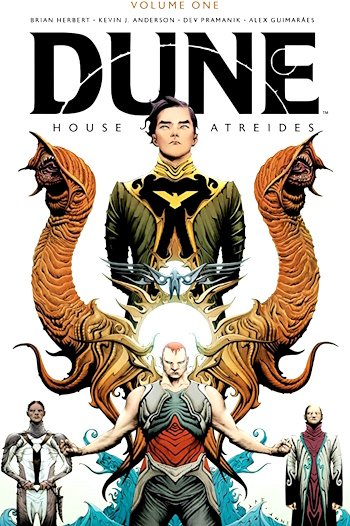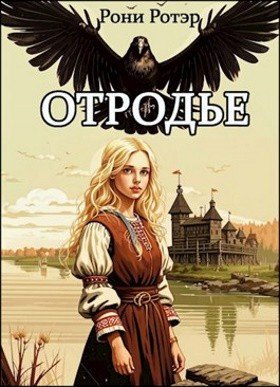Pianos, Priests, and Popular Culture
/
217
introspection—the “happiest hour” of one’s life, as Ophuls’s Lisa (Joan Fontaine) puts it—against the exigencies of profane existence. Yet the function of keyboard instruments in The First Legion is much more complicated than merely orchestrating a confrontation between past and present. More is at stake than simply having passionate piano sounds signify a formulaic antagonism between emotion and scientific reason, between culture and civilization.
Let us backtrack for a moment: Father Fulton is introduced as a former pianist whose devotion to concert music diverts him from his teaching obligations at the seminary. In the opening sequence we witness Fulton rushing home by train and car to teach a course on Christian self-discipline. Fulton, we learn, had just attended a performance of Grieg’s piano sonata. Yet although he had left the concert after the second movement, he will fail to appear for his lecture on time: passion and pleasure cut through the paths of methodical conduct and punctuality. Clocks, cars, and trains—the pace-makers of modern life—thus mark Fulton’s entry into The First Legion.
They show him as a haunted traveler between two worlds, a pilgrim oscillating between the existential possibilities of recluse and genius stardom, spiritual duty and sensual pleasure, ethics and aesthetics. Fulton’s torment ends when Father Sierra recovers from his ailment. He hails the alleged miracle by playing parts of that very piano sonata that he had to abandon in the opening sequence. Sierra’s convalescence thus seems to resolve the discord of Fulton’s existence. The miracle, in Fulton’s view, reconciles the diverging demands of music and prayer. It injects the cerebral world of the seminary with the bliss of corporeal experience and unfettered spontaneity.
Does it, though? And do plot and mise-en-scène endorse Fulton’s utopian vision? The film’s sound and image track indeed suggest something quite different. Otherwise fairly unnoticeable, Hans Sommer’s musical score at the end of the first miracle sequence picks up Fulton’s Grieg performance, carries selected motifs over to the nondiegetic level, and crescendos into a sappy carpet of sounds and emotions. The sonic switch from diegetic to nondiegetic coincides with a visual dissolve from Fulton’s hands to the frenzied crowds outside the seminary’s gate. Sound and editing thus reveal a curious complicity between Fulton’s own recuperation and the crowd’s sensationalism. Consolidating disparate spaces and temporalities, Sommer’s sound bridge identifies Fulton as a populist whose quest for charismatic experience is driven by the very kind of strategic individualism that erodes charisma in the first place. Fulton’s salvation is as fake as the first miracle itself. It connects to an other that in truth is a willful projection of the self. Con-
07-C2205 8/17/02 3:39 PM Page 218
218
/
Berlin in Hollywood, 1939 –1955
trary to our first impression, then, Fulton’s grand piano is a harbinger not of expressive authenticity but of the popular’s manipulation and commodification of desire. Grieg’s piano sonata emerges as mass culture in the guise of high art, as popular materialism in the costume of aesthetic refinement, as instrumental reason in the attire of self-abnegating introspection.
Father Fulton literally drops out of the picture briefly after the first miracle sequence. He does not resurface until the film’s last sequence, the second and “real” miracle. In contradistinction to his appearance in the opening sequence, however, Fulton now meets his ecclesiastical obligations—he plays the organ and coaches a choir in the seminary’s chapel. Recalling Erich von Stroheim’s mannered Bach recital in Sunset Boulevard, Fulton’s organ performance is meant to offer a sign of some kind of radical alterity; it sets the stage for a miracle that shuns publicity, commodification, and rational explanation. It is important to note that in this final sequence sound and image track have reversed their earlier configuration: we first hear what could be nondiegetic music and only then learn about its diegetic source.
The choice of music in this scene is equally momentous. Whereas earlier Grieg’s neoromantic piano sonata underscored the phony nature of the first miracle, true redemption is authenticated by the devout sounds of the Te Deum Laudamus. Cured from his initial populism, Fulton, in playing Ignaz Franz’s Te Deum, becomes an agent of simultaneous inclusion and exclusion. He launches a form of healing that purports to overcome self-interest and reification by radically turning away from ordinary social relations.
Sirk’s eschatology in the end of The First Legion once again rings Wagnerian indeed. The film’s final organ music appeals to preindustrial notions of popular culture and their embeddedness in religious belief systems so as to profess—like Wagner at Bayreuth—the absolute difference between commodified diversion and authentic culture in the present. It espouses an exoticized past and other in order to fortify authentic meaning against the materialism and vacuous populism of the day. Yet similar to Wagner’s musical sanctuary at Bayreuth, Sirk’s casting of hallowed organ music lays claim to forms of cultural autonomy that, in the final analysis, must remain delusionary. Both Wagner’s and Sirk’s Manichean quests for authenticity become cult because both stop short of recognizing that aesthetic autonomy owes its historical possibility to the very process that also initiated the emergence of commodified mass culture. At the end of The First Legion organs may displace pianos to evacuate popular kitsch and industrial mass culture, but, all things considered, Sirk’s Wagnerian project of overhauling American culture and cinema cannot but fail when it tries to offer practical remedies to the troubled studio system of 1950, a system that, of course,
07-C2205 8/17/02 3:39 PM Page 219
Pianos, Priests, and Popular Culture
/
219
was as far as ever from denying its commercial bases and that continued to extol the star commodity, not the vision of art as cult, as a modern proxy of sacred meaning.
c h u c k - a - l u c k r e c o n s i d e r e d Fritz Lang’s 1952 western Rancho Notorious also assigns a prominent role to a (baby) grand piano yet not in order to involve the viewer in a narrative about the place of individual expressiveness and salvation but rather to define a space that rules out symmetrical forms of intersubjectivity and unhampered communication. Lang’s piano inhabits a space in which desire and vengeance erase the infrastructures of community, a space in which neither law nor morality sets limits to human conduct and in which, for that reason, secrets of the past consummate the present. Lang’s fateful grand is located in a hideout for desperadoes operated by the ex-saloon singer Altar Keane (Marlene Dietrich). In its initial two appearances the grand provides the Dietrich character with a sonic background to feature her narcissistic desire for control and authority (fig. 27). First singing to piano accompaniment (“Get Away, Young Men”), and then playing the keyboard herself, Altar’s musical sounds join attraction and rejection into an unpredictable aesthetics of coldness. Her music arrests her listeners in a masochistic desire for distanciation and deferral. It engrosses them in quasi-institutionalized games of waiting, in surprise gestures of tenderness and cruelty, in performative masquerades that delay consummation.23 In its final appearance, by contrast, the piano remains mute. Its sheer physicality may dominate the space in which the climactic shootout takes place; it may protect Vern (Arthur Kennedy) and Frenchy (Mel Ferrer) from the bullets of their enemies; and it may set the scene for Altar’s sacrificial death. But as a musical instrument the piano has nothing left to say. Desire and hate have obliterated all channels of human interaction, including masochist forms of bondage.
The rest, it appears, is silence.
One of three westerns Lang shot during his career in Hollywood ( The Return of Frank James, 1940; Western Union, 1941), Rancho Notorious was based on a screen story originally developed by Lang himself.24 The film fitted well into postwar constellations, a period that witnessed not only a remarkable reemergence of the B western (westerns constituted 27 percent of all Hollywood feature films released from 1946 to 1949)25 but also the rise of the so-called adult western, which pushed the genre beyond its classical naivety.26 Narrated with the help of a series of rather unconventional flashbacks, Rancho Notorious tells the story of Vern, a Wyoming cowboy
07-C2205 8/17/02 3:39 PM Page 220
220
/
Berlin in Hollywood, 1939 –1955
who sets out to avenge the rape and brutal murder of his fiancée. After many travels and travails Vern finally faces the murderer, Kinch, at Altar Keane’s hideout ranch, a sanctuary run with profits accumulated from “Chuck-a-Luck” gambling. Altar is involved with the gunman Frenchy, but before long Vern, too, finds himself drawn to her magnetic persona. Passion displaces better judgment as unforeseen desire tends to override Vern’s cold-blooded project of revenge. In the last sequence, however, Vern will unite with none other than Frenchy in order to confront Kinch and conclude his original mission. Altar saves Vern’s life during the dramatic shootout by taking a bullet aimed at the avenger. She will die in Vern’s and Frenchy’s arms after they have killed Kinch and all of his sinister companions. In the film’s final shot we see both cowboys riding off into the open landscape—two loners whose quest for punishing the crimes of the past ended up erasing the possibility of any meaningful present and future.
The enduring notoriety of Rancho Notorious, of course, stems neither from Lang’s fatalism and signature focus on self-destructive agency nor from Dietrich’s hyperbolic role as a singing cowgirl. Rather than the film’s diegetic actions and sounds, it is Lang’s intermittent recourse to a nondiegetic theme song that is usually considered the film’s most palpable contribution to American film history. Composed by Ken Darby and sung by William Lee, this cowboy ballad owed its existence to an idea of screenwriter and Harvard Law School graduate Daniel Taradash. The song comes in three installments. It prepares the viewer for a “tale of hate, murder and revenge” during the opening credit sequence; it provides narrative cues during Vern’s search for Altar’s ranch; and it winds up the film with lyrics that strangely contradict what we see onscreen. Accompanied by guitar alone, the singer relies on melodic progressions and rhythmic patterns typical for nineteenth-century American folk music. The song echoes harmonic idioms regularly associated with the Hollywood western genre, yet Lee’s expressive tempo changes and didactic crescendos echo a quite different musical legacy, namely that of Kurt Weill and the Gebrauchsmusik (utility music) that energized Weill’s and Brecht’s 1928 Three Penny Opera. Recalling Brecht’s own work for Weimar cinema, his contribution to the making of Kuhle Wampe (1932), the theme song of Rancho Notorious forces the viewer, as some have argued, to become a quasi-Brechtian participant in the construction of the film’s meaning. It shifts our attention away from the image track, presents sound as a stand-alone element, and encourages the viewer to oscillate between different and at times contradictory levels of narrative emplotment, between the diegetic and nondiegetic, between emotional identification and cognitive distanciation.

07-C2205 8/17/02 3:39 PM Page 221
Pianos, Priests, and Popular Culture
/
221
Figure 27. The aesthetics of coldness: Marlene Dietrich in Fritz Lang’s Rancho Notorious (1952). Courtesy of Filmmuseum Berlin—Deutsche Kinemathek.
Brecht in Hollywood? The studio system as an avant-garde laboratory of contrapuntal sound? A Brechtian reading of Rancho Notorious’s theme song, insinuated by none other than Lang himself, clearly calls for further examination. Brecht’s position in Hollywood during his vexed years in American exile (1941–1947) was elusive, riddled with remarkable ambigu-ities and contradictions. Although he denounced Hollywood as an insuf-ferable “showcase of easy going,”27 Brecht hoped to find in Hollywood a conveyor belt for his political and aesthetic visions. Brecht’s actual contribution to Hollywood filmmaking as a screenwriter remained limited to only one production— Hangmen Also Die (1943), by Fritz Lang. This is not the place to recall the controversies that marked Brecht’s role in the making of this anti-Nazi film. What is important here, however, is that Hangmen Also Die indeed evinced traces of a Brechtian aesthetics of counterpoint and distanciation, thanks in particular to Hanns Eisler’s score. Similar to Eisler’s score for Kuhle Wampe, 28 Hangmen Also Die aspired to have nondiegetic music act not as a sensuous amplifier of the image track, of individual heroism and bourgeois subjectivity, but—in Eisler’s words—“as
07-C2205 8/17/02 3:39 PM Page 222
222
/
Berlin in Hollywood, 1939 –1955
























